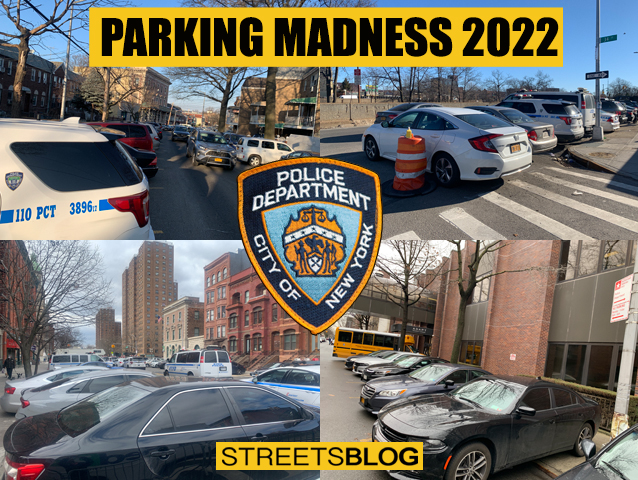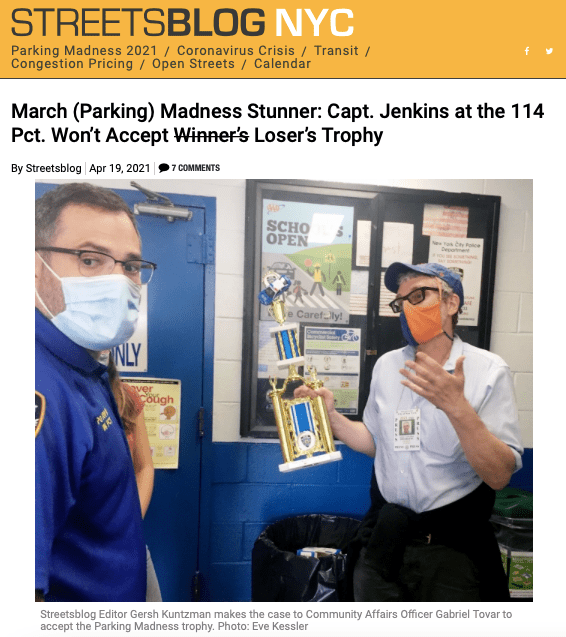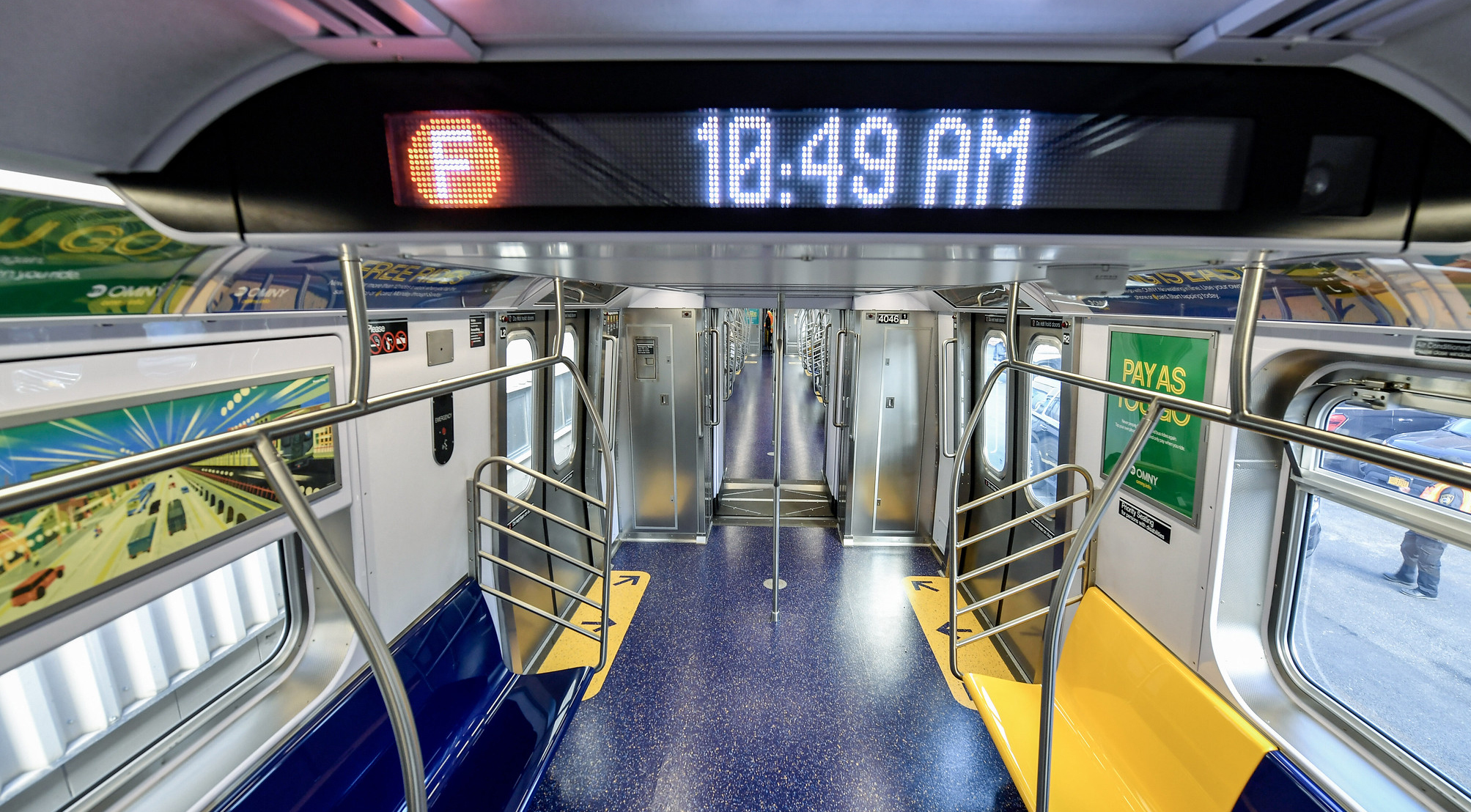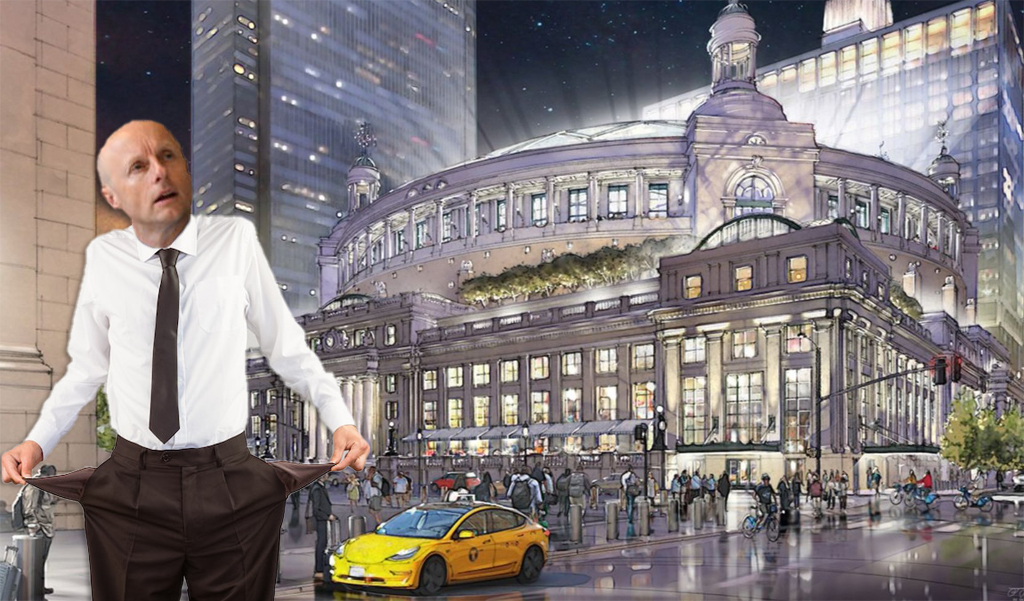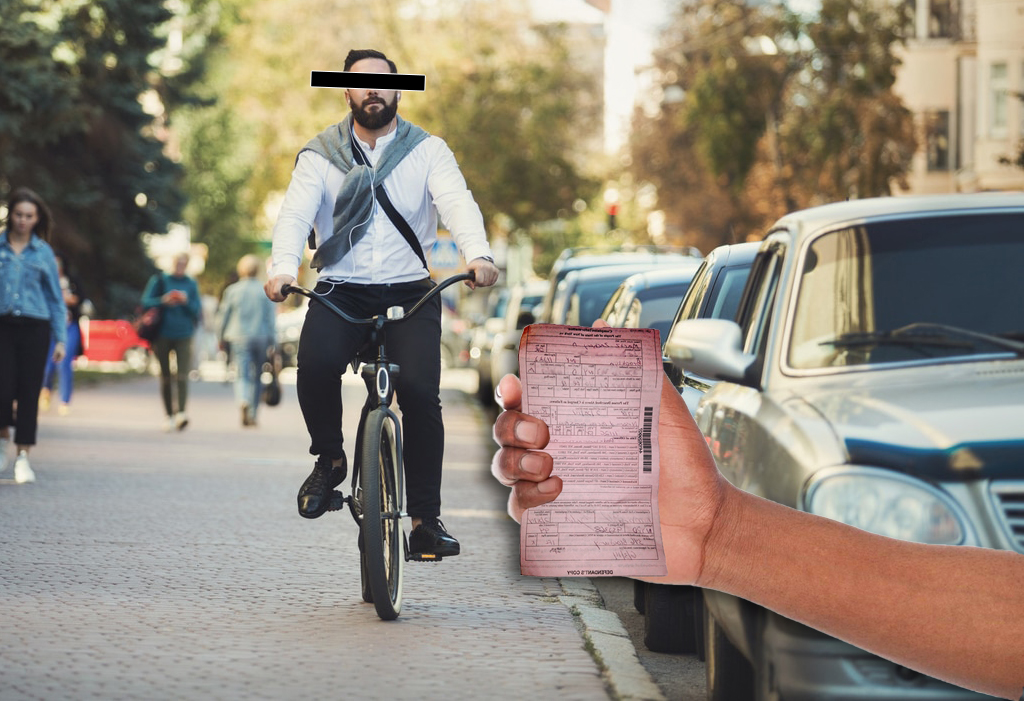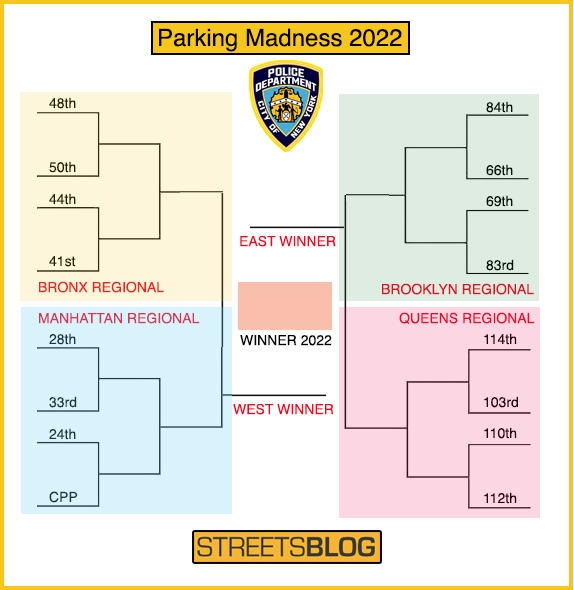
Are we really forced to do this again?
Yes, it's time for Streetsblog's annual March (Parking) Madness tournament, where 16 police precincts compete for the title of Worst Neighbor to the community it is supposed to protect and serve.
By "worst," we, of course, mean the contempt that most NYPD precincts show towards the residents who happen to live on the same blocks as the stationhouse, where cops not only commandeer all the parking, but also leave their personal cars wherever they want, often blocking pedestrian ramps, bus lanes, bus stops and bike lanes.
And don't even get us started about "combat parking," which is a real NYPD thing that orders police officers to ring their stationhouses with perpendicularly parked cars.
The result of all this is that many blocks around NYPD stationhouses are chaotic, garbage-strewn, dangerous, and appear to be occupied by a hostile military force that doesn’t care about its neighbors.
Which, in fact, the NYPD is, as proven by this contest as well as lots of other coverage of the agency's failure as a Vision Zero partner.
In the course of our tournament last year, we saw:
- Cops parked in front of fire hydrants.
- Cops triple-parked.
- Cops leaving cars in crosswalks, curb cuts and in a way that blocks pedestrians or those in wheelchairs.
- Cops who leave their cars in residents’ driveways.
- One block where the police were so aggressive in taking parking from neighbors that residents started deploying their own barricades to block cops from stealing “their” spaces.
Just for fun, let's take a slideshow walk down Memory Lane (which is full of cars):
The general public shares the concern of the safe-streets community about the middle finger NYPD officers and employees deploy to their neighbors. Last year, Streetsblog's parent company, Open Plans, commissioned the polling firm Data for Progress to gauge public opinion about a host of streetscape issues. Among the questions was, "Should cops be able to park their cars on the sidewalk during non-emergencies?"
The results (margin of error is plus/minus 4 percent) were not surprising:
- 63 percent said they oppose cops parking on the sidewalk.
- Of those, 47 percent were "strongly opposed," while only 15 percent "strongly support" this entitlement for officers.
- Women are far more opposed to the practice than men (68 percent opposition compared to 57 percent opposition).
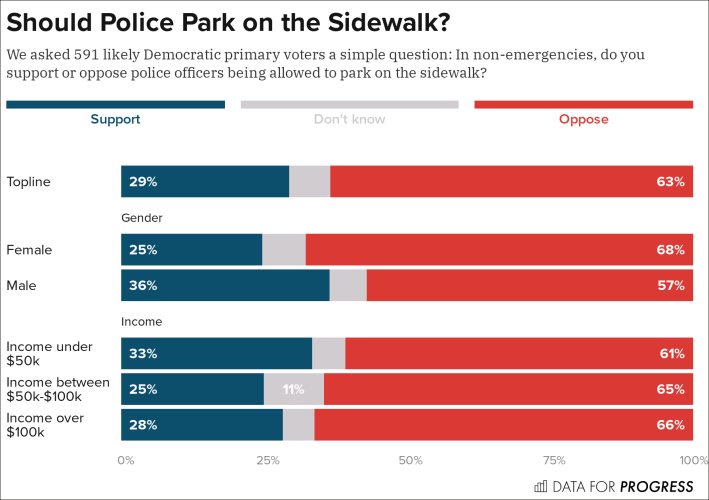
Clearly, the public does not want cops parking on the sidewalk. But let's be clear: The chaos around New York City police precincts is not merely aesthetic or symbolic — it creates a real danger to pedestrians, cyclists and other motorists (and an illegal impediment to people in wheelchairs).
As part of our preparation for last year's contest, Streetsblog undertook an exhaustive review of city crash reports on the blocks near and directly in front of NYPD precinct houses. In many cases, protected or painted bike lanes vanish on the roadway directly in front of a station house, which is entirely a result of the NYPD not supporting the Department of Transportation's efforts to keep cyclists safe.
In other words, a cyclist can be riding, say, westbound on E. 119th Street in Harlem, where there is a painted bike lane and relatively little danger from drivers. When the cyclist crosses Lexington Avenue, the bike lane disappears and suddenly the roadway is filled with dozens of more parked cars, some perpendicular or angled to the sidewalk, some scattered here and there, with squad cars often double-parked in front of the 25th Precinct station house. It's a chaotic mess that leads to crashes. Here's what it looks like:

Yes, it's a mess, but is it more dangerous to drivers and more vulnerable road users? A verifiable yes.
In our study, which covered crashes from from the start of 2018 until the dawn of the pandemic in 2020, we found that on precincts that face a public street:
- 70 precincts had a higher number of crashes on the precinct block than on either of the side streets directly on either side of the station house. Only four precincts in the entire city — the 62nd in Bensonhurst, the 90th in Greenpoint, and the Fifth and 23rd in Manhattan — had fewer crashes on the block in front of the station house.
- The increase in crashes on a precinct block versus the neighboring blocks varies by precinct and borough:
- In Manhattan, the average precinct block had more than double the crashes (118 percent more) than the blocks on either side of the station house.
- In The Bronx, the average precinct block had 75 percent more crashes than the blocks on either side of the station house.
- In Brooklyn, the average precinct block had more than triple the crashes (204 percent more) than the blocks on either side of the station house.
- In Queens, the average precinct block also had more than triple the crashes (232 percent more) than the blocks on either side of the station house.
- Staten Island had similar numbers, but the results were heavily skewed against the NYPD because one precinct block contains a busy supermarket with a large parking lot, and it is likely that the supermarket bears a disproportionate share of the blame for crashes.
The reason there are so many crashes on precinct blocks is simple: There is so much driving to precinct blocks — and so much chaos on precinct blocks. Both are problems that are easily solved, yet former Mayor de Blasio nor his various (and exclusively White) police commissioner's solved.
Reducing driving to police stationhouses — whether through placard reform or requiring police officers, like other city employees, to live in the five boroughs — is imperative, as Streetsblog's other main police driving investigation clearly revealed in 2019.
But for now, the goal of this contest is to reveal how NYPD stationhouses are not city office buildings but filthy frat houses where cops do whatever they want, neighbors be damned.
Last year, when we asked the NYPD to comment about our series, Sgt. Jessica McRorie said, "Commanding officers at locations across the city are always working to better address this condition."
Last year provided ample evidence that this is not true. Will this year's contest be any different? We hope.
